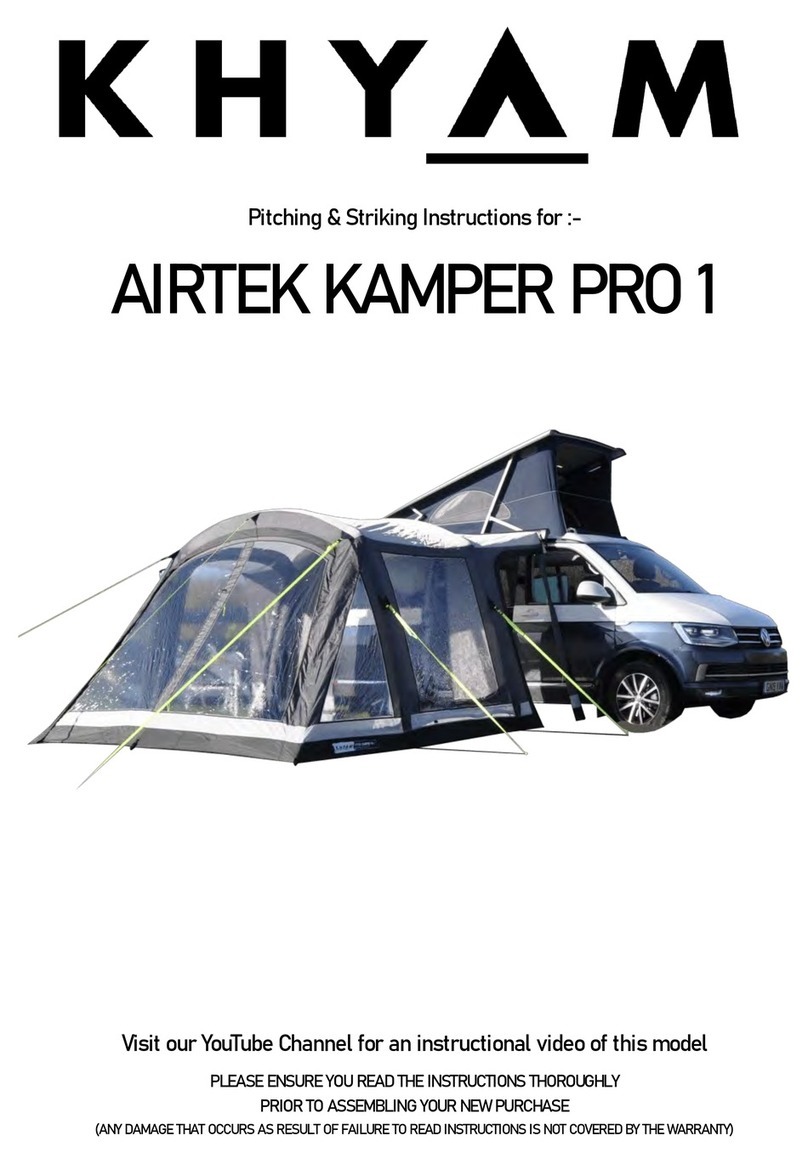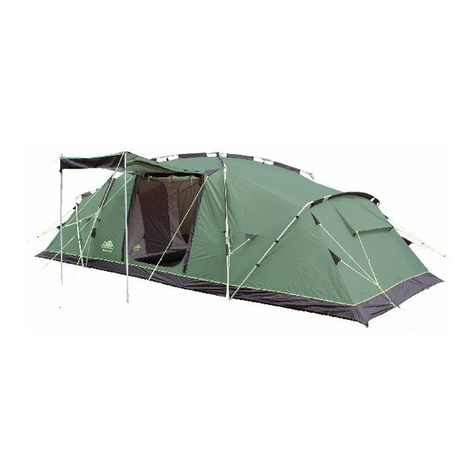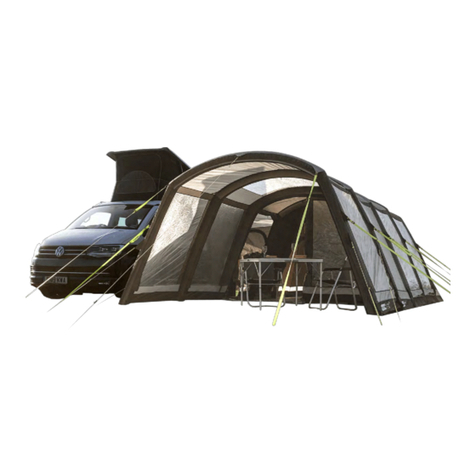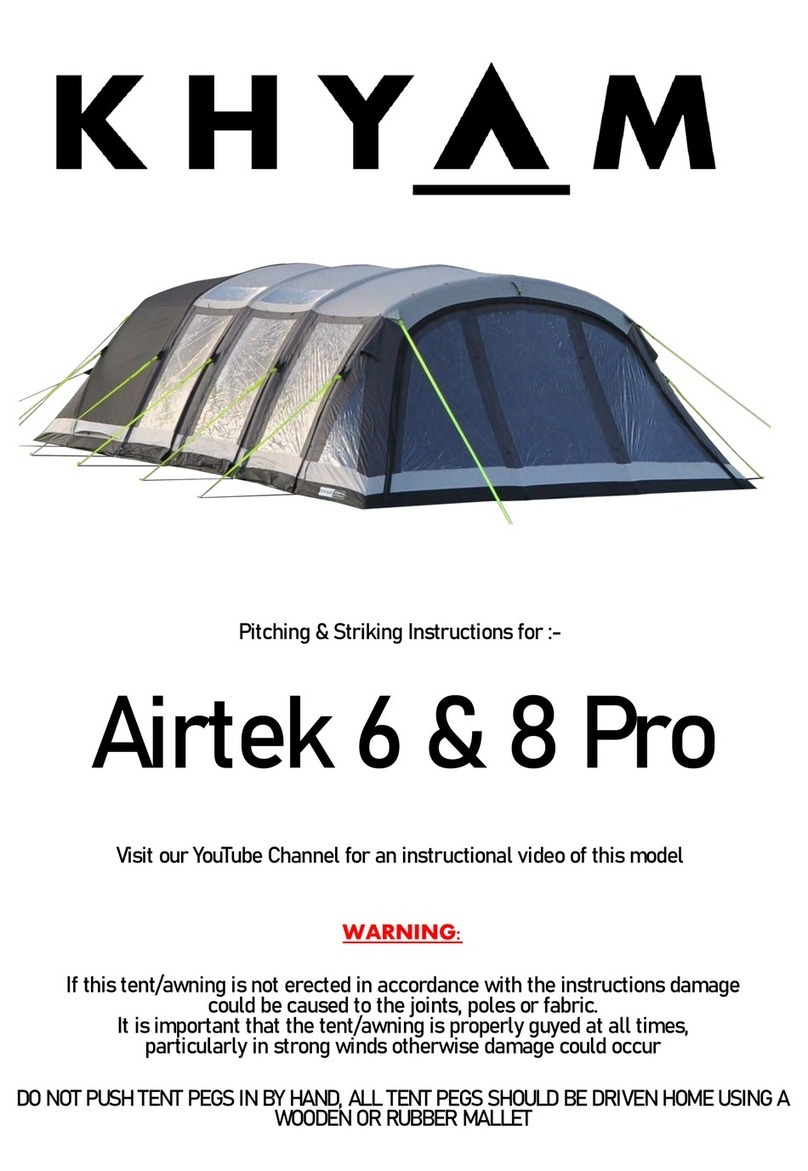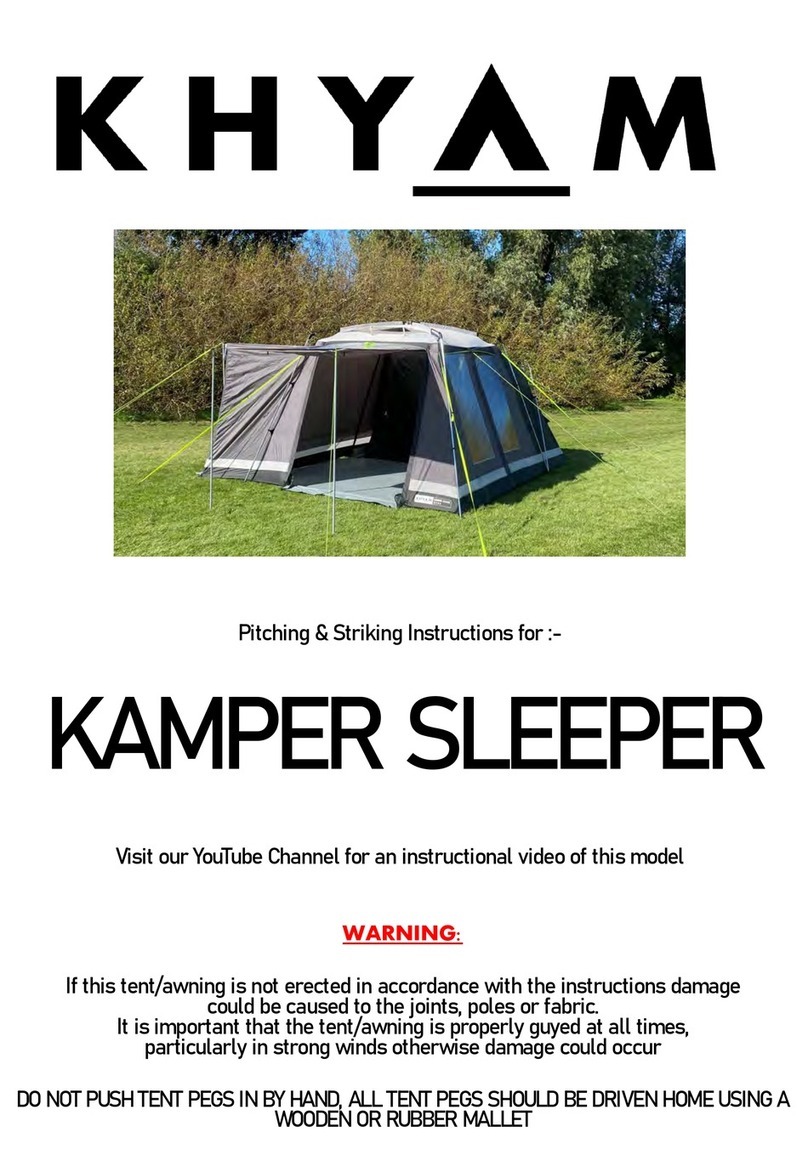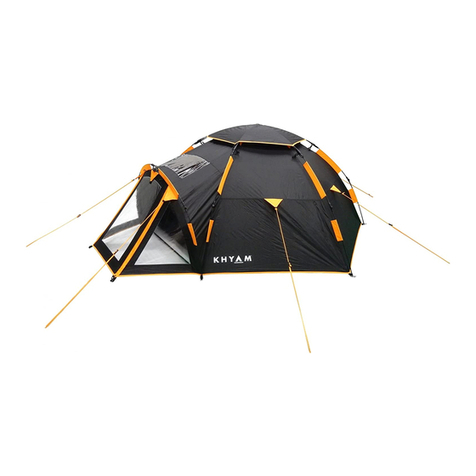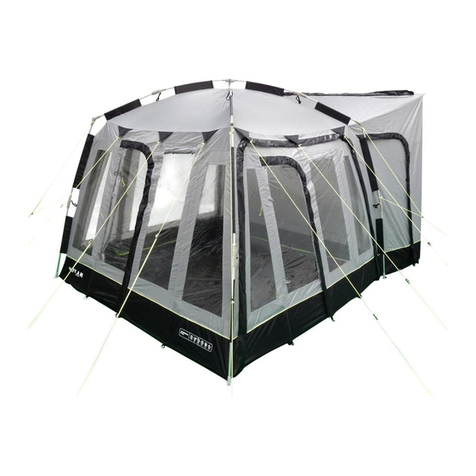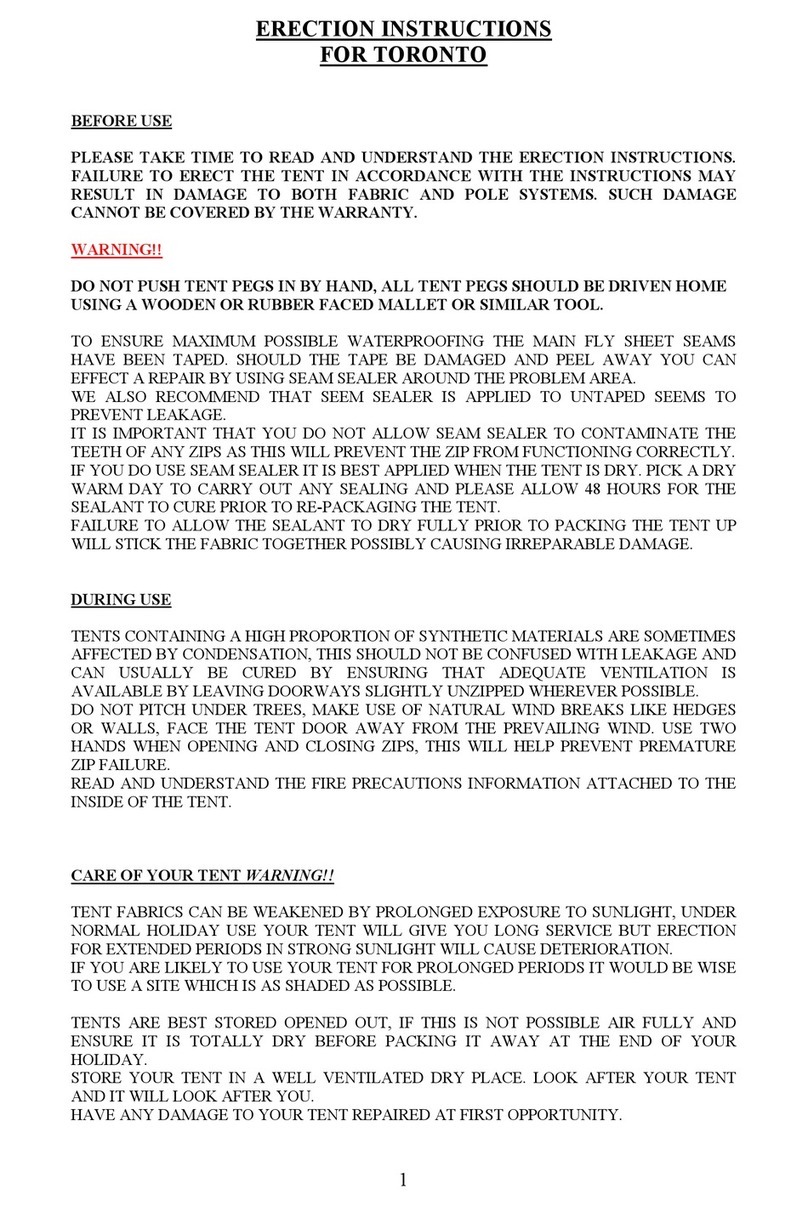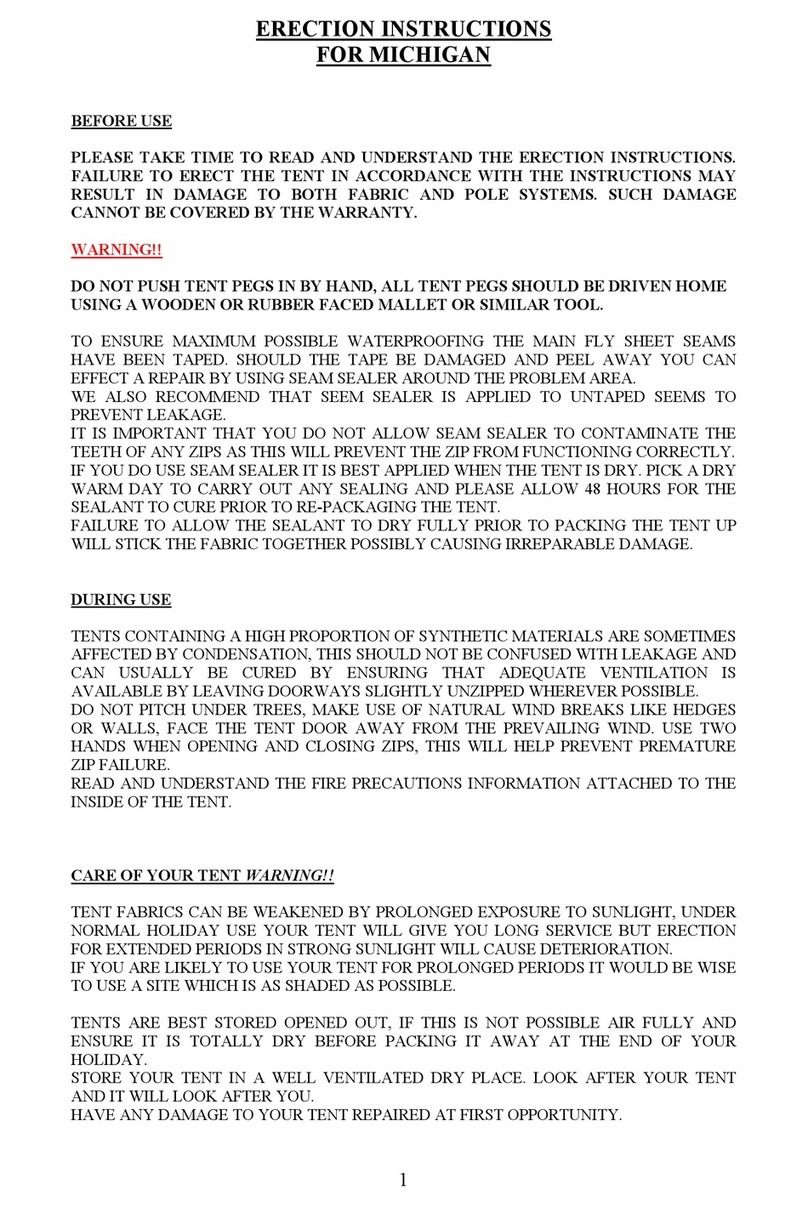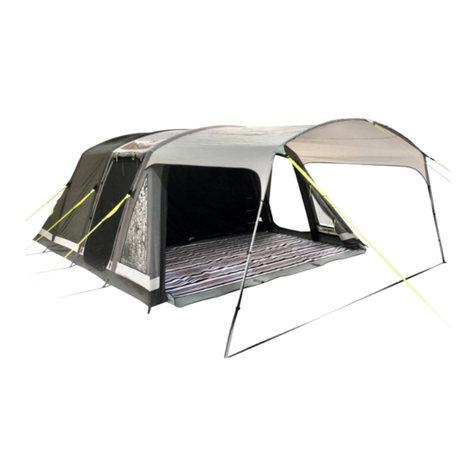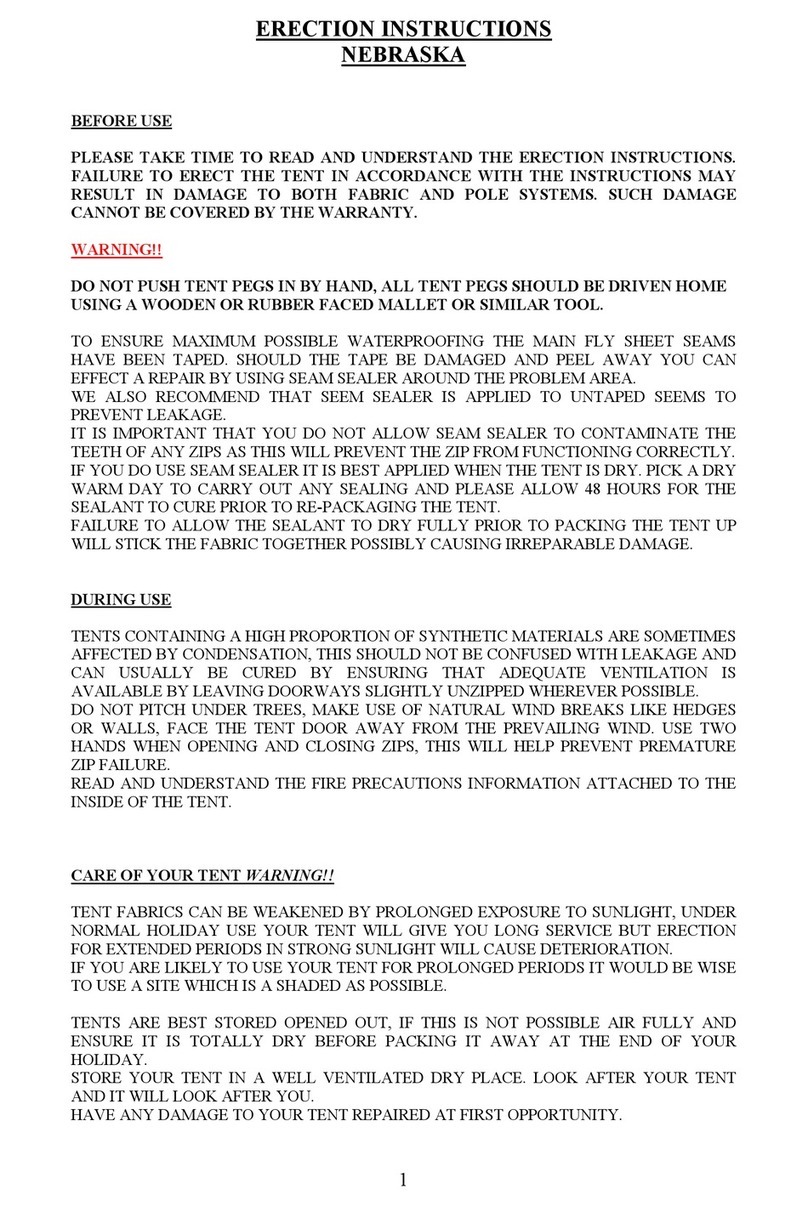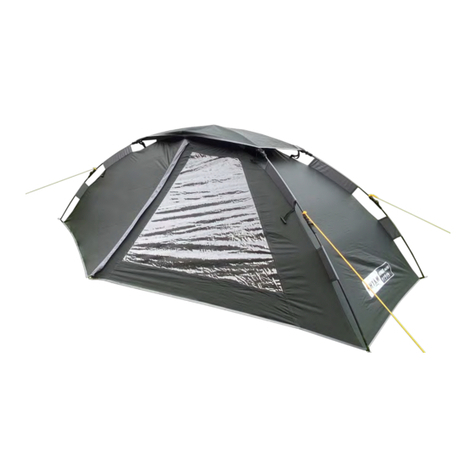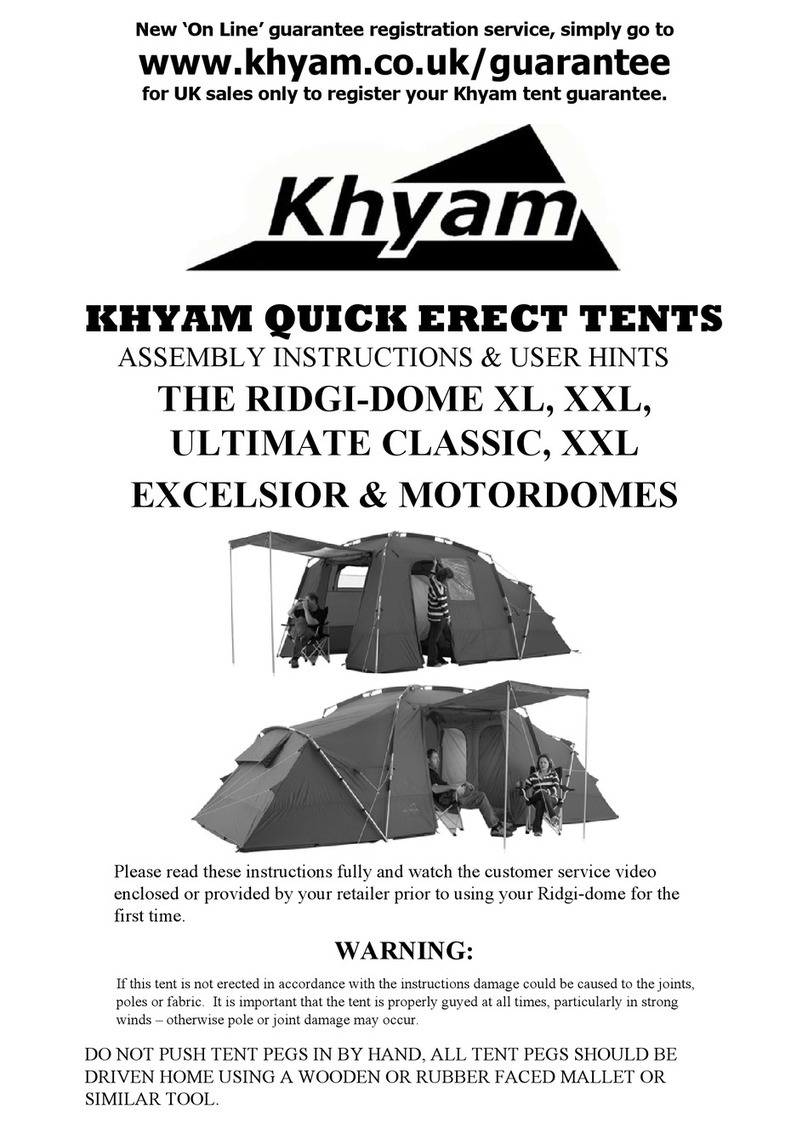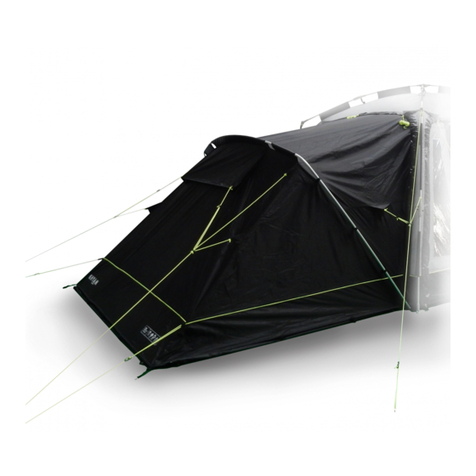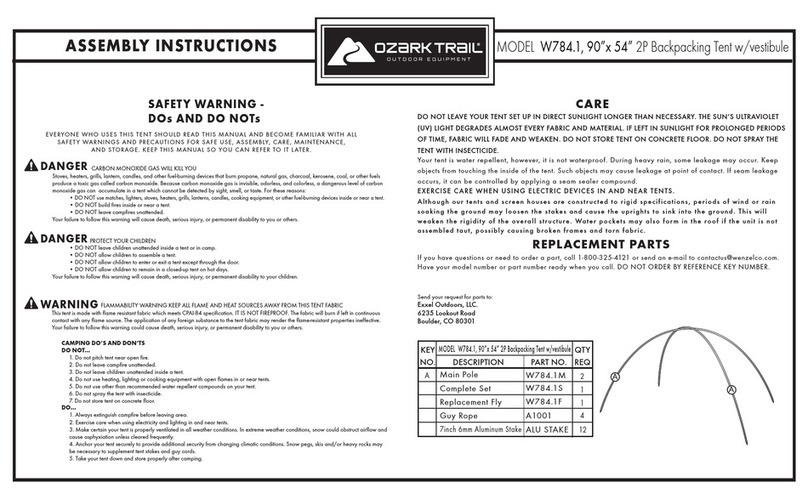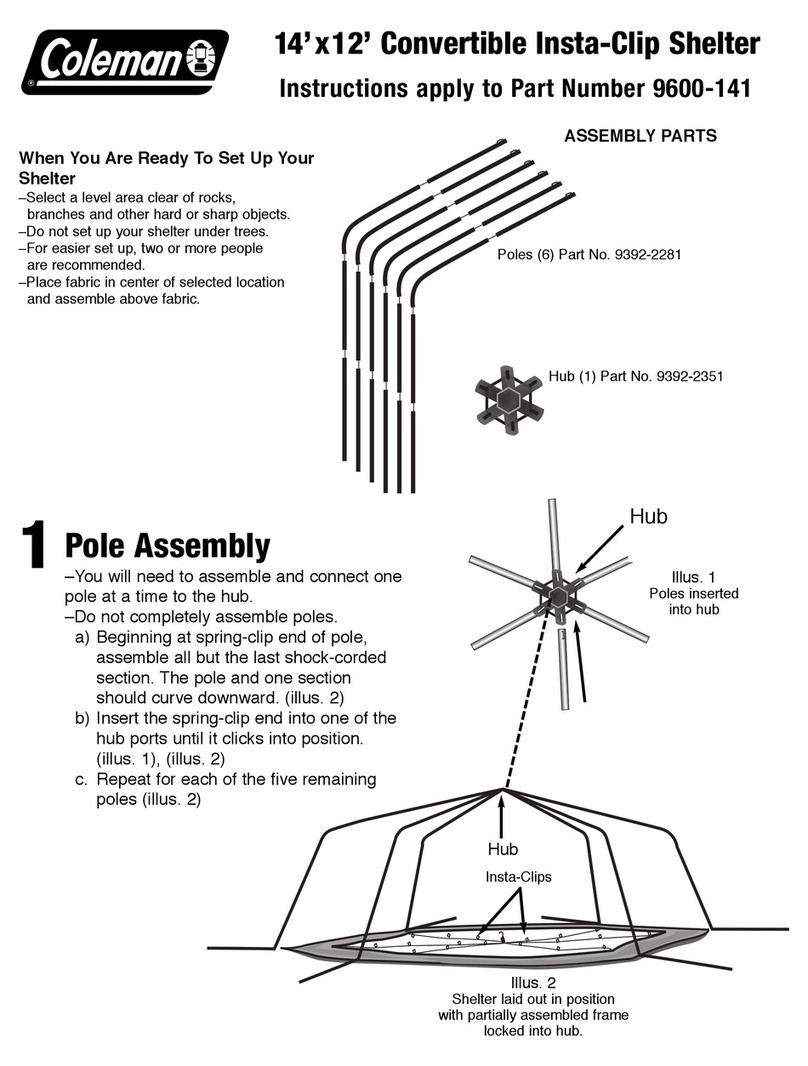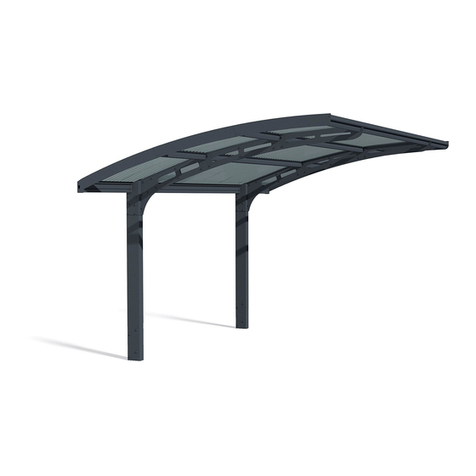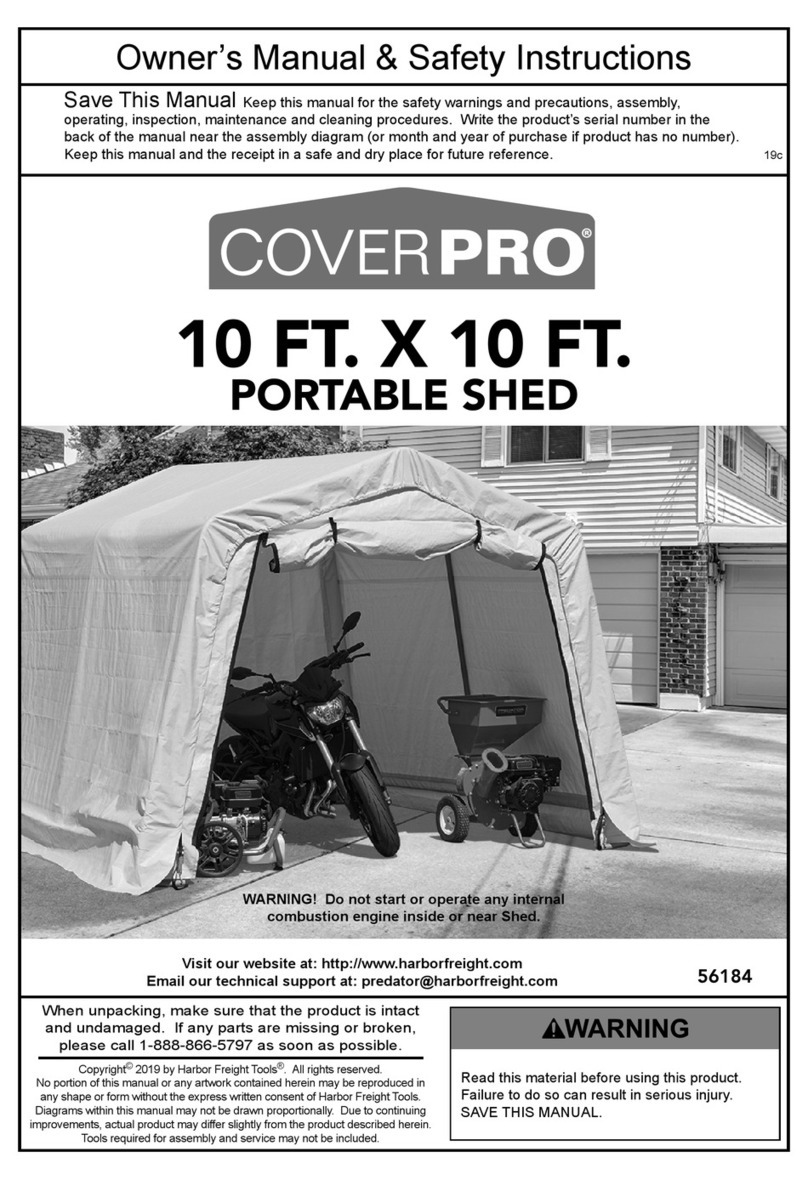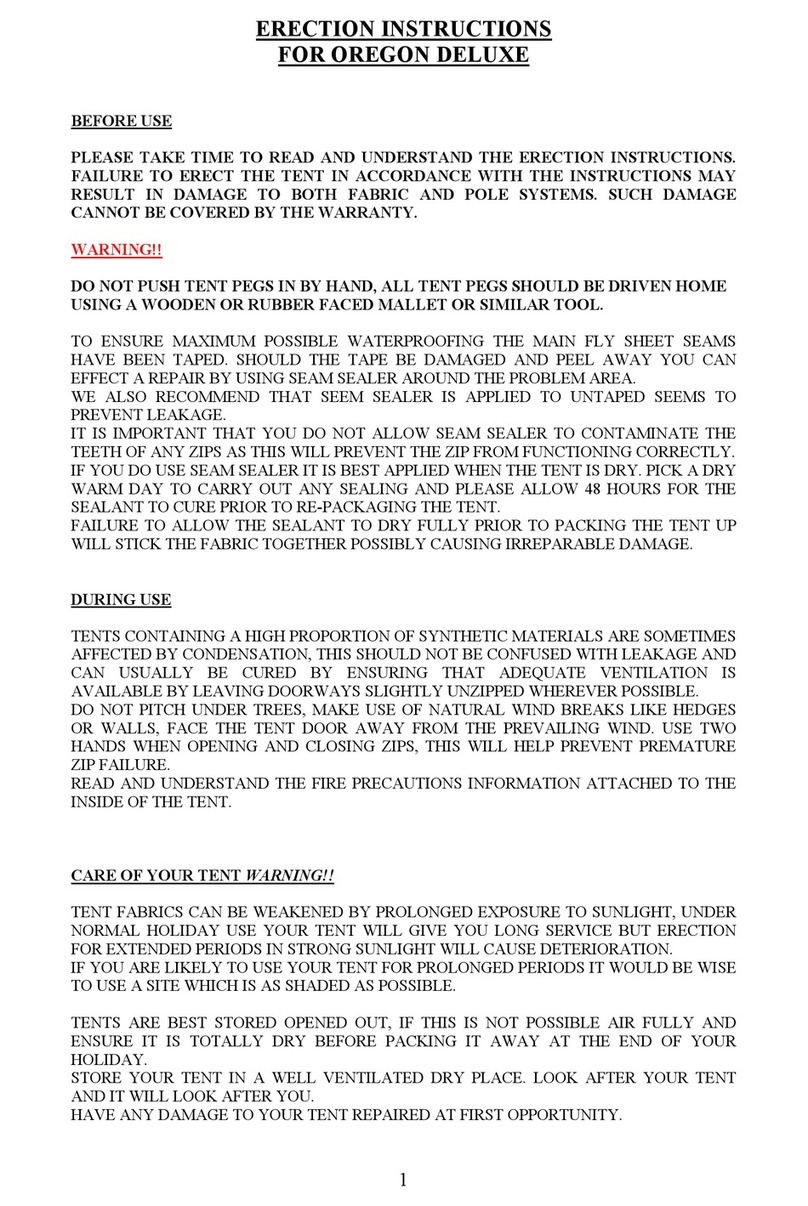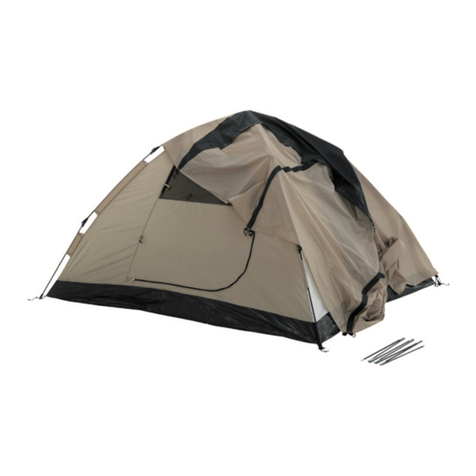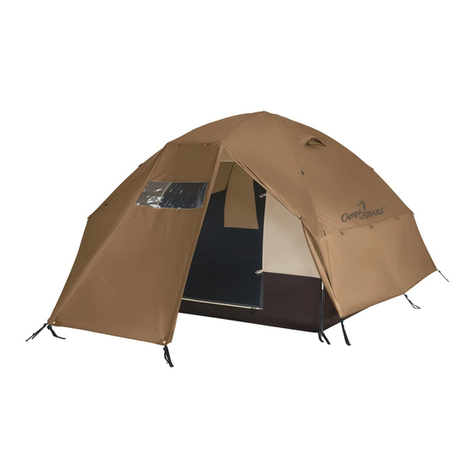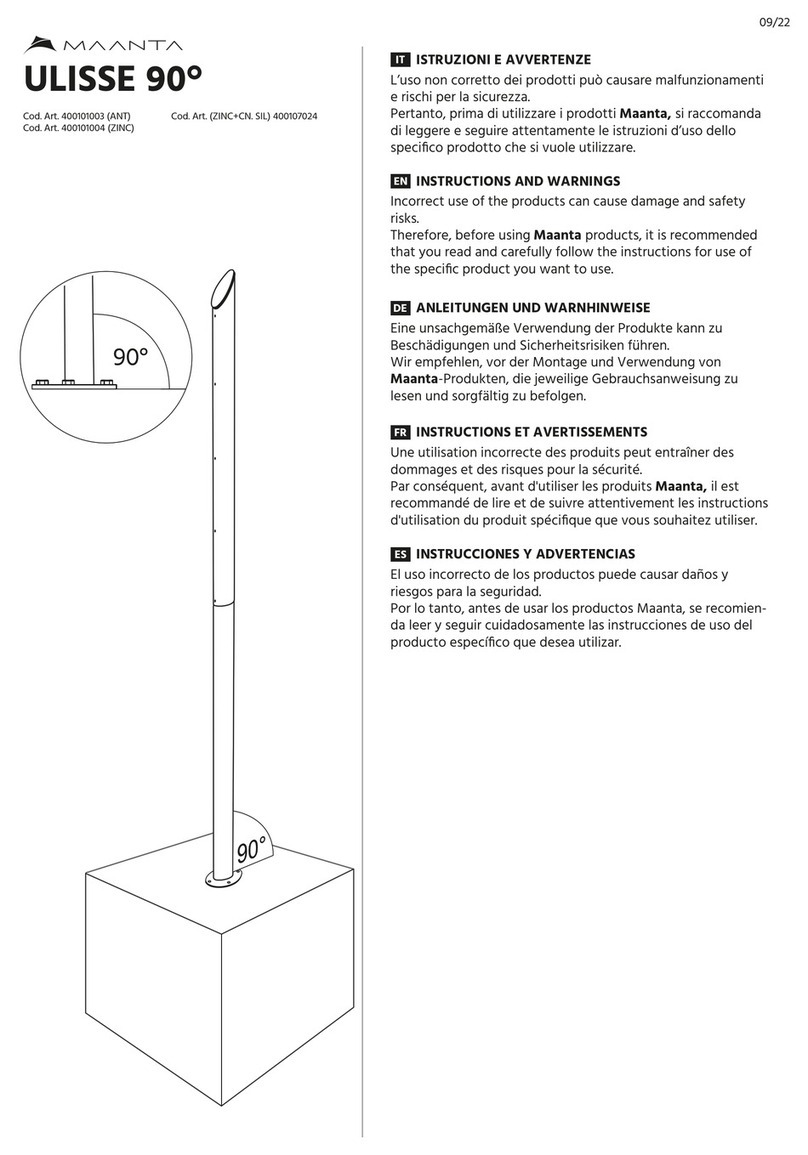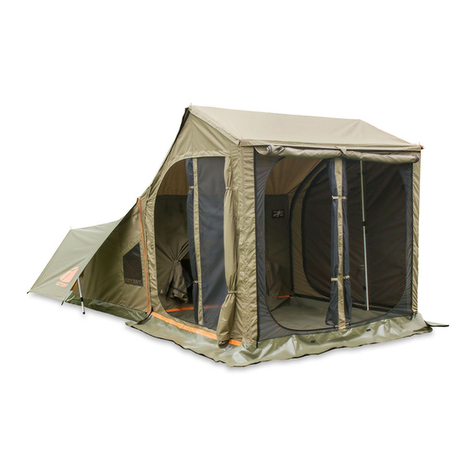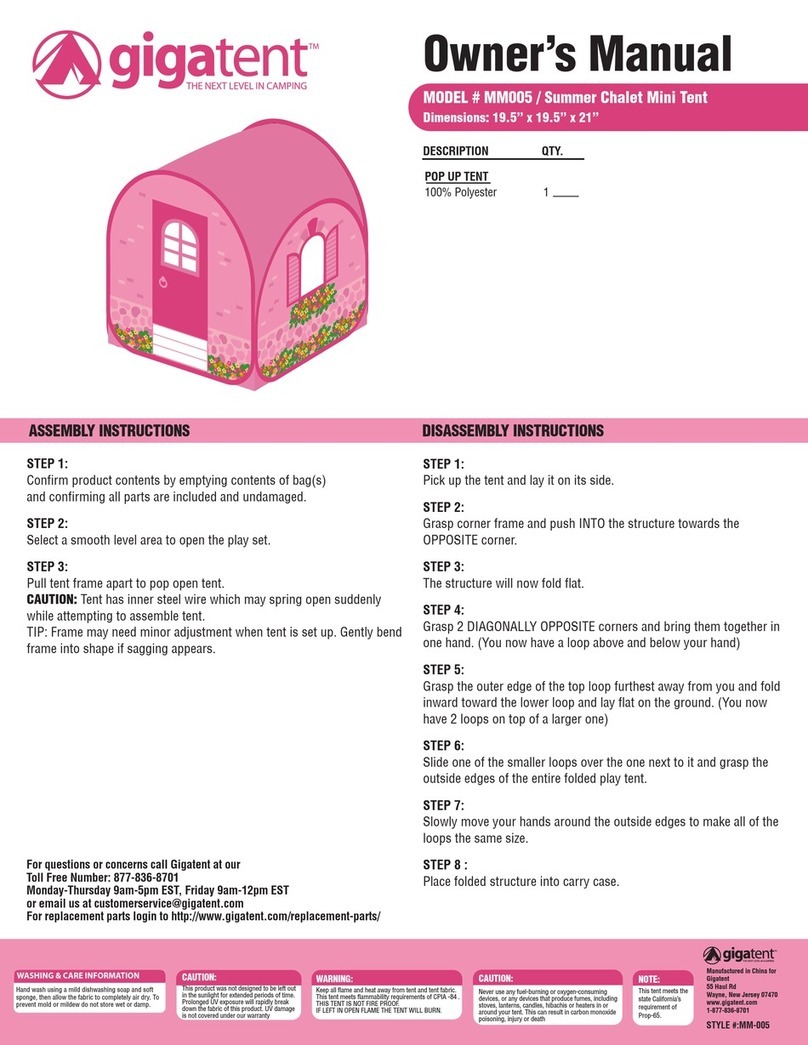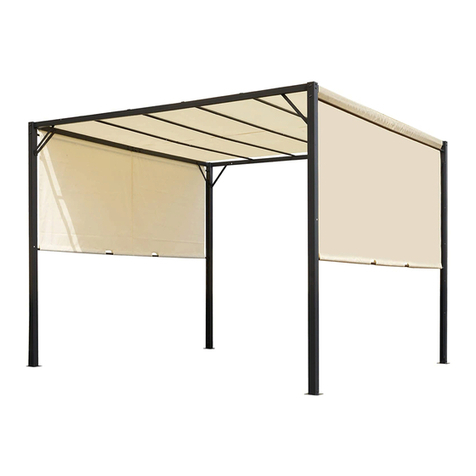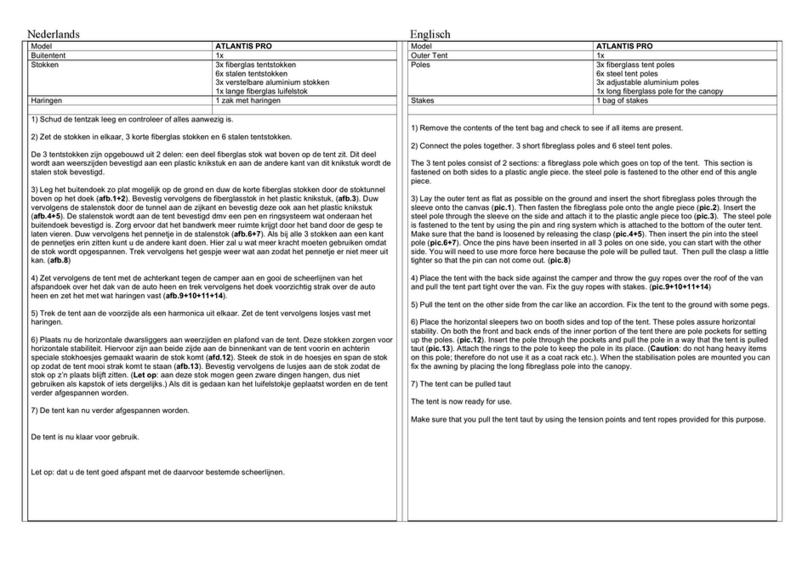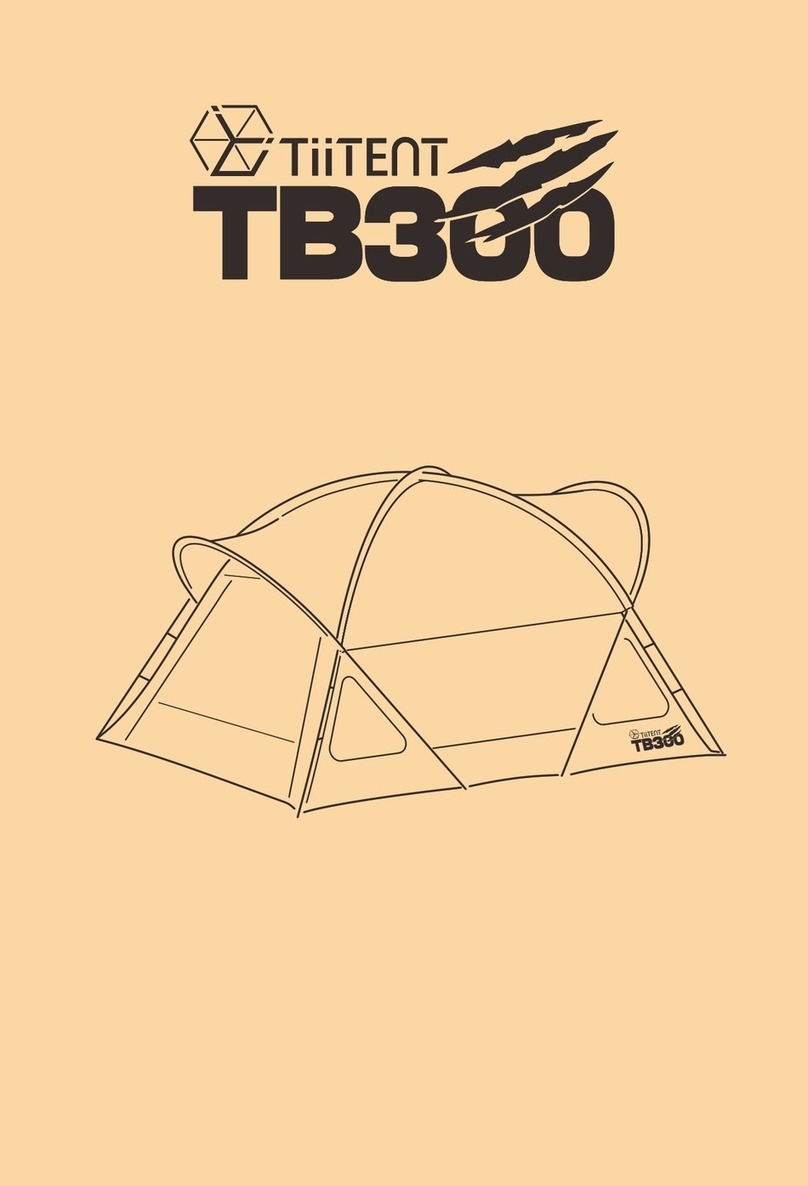
8
Q . What about the strength and durability of the poles & joints · can I trust them?
In simple terms, yes you can trust the poles and joints the technology has existed for many years. The poles are stronger than those
normally supplied with other awnings as ours are a mixture of duralumin aluminium alloy and solid breglass. The joint system is
moulded from nylon with, glass lling adding hardness to the nylon. The rivets are brass and the springs are stainless steel.
IMPORTANT USER HINTS
Over many years we have heard many quesons and comments relang to Khyam awnings and we feel it is
relevant to list various aspects of this informaon for your guidance.
Q. Do poles or joints break -and if so what can I do?
It is rare that the poles or joints break when used according to our instrucons. They are extremely durable and have been tested to our
exacng standards. We cannot guarantee that there will never be a breakage, but we can guarantee that we will supply any replace-
ments required during the warranty period. Should you need to recfy a problem then poles and or joints are quickly and easily re-
placed. If you are travelling to remote parts of the world then spares are available to take with you at a subsidised rate to allow you the
comfort of insurance without great penalty. Please contact our Warranty Dept/Tent Spares Ltd for spares
Q, What about spares -can I get them? Yes, Spares are available directly from Tent Spares Ltd
Q . Are Khyam awnings water resistant?
All Khyam ysheet fabrics are coated to withstand in excess of 5000mm head of water in the hydrostac head test. This is a measure by
which we can test the resistance of water penetraon. This is the measurement when the fabric is new and in use over a period of me
this level will drop. The majority of seams on your Khyam awning ysheet have been seam taped during manufacture. However
it is somemes not possible, due to the nature of some materials used and sewing methods employed, to fully seal all seams. It may
therefore, in some circumstances, be necessary to manually seal certain seams with the sealant provided. Should you nd any ‘drips’ or
‘wicking’, rst locate the exact posion where the water is penetrang the ysheet. Remember this may be at a higher point than the
drip, as the water may roll along the inside of the ysheet unl it nds a place to ‘pool' and form a drip. Once the point of the water
ingress is found, note this posion and using the brush or pad provided with the sealant, apply the sealant to the seam. The ysheet
should be clean and dry before the sealant is applied. Work the sealant well into the stch holes and the sewing thread in the area of
the water ingress. We recommend sealing the seam at least 5cm above and below the point of water ingress. Please note that due to
the ‘wicking eect’ you may nd that water penetrates seams that have been tape sealed. Water can, in some circumstances ‘wick’
along the sewing threads which run under the seam tape. So it is very important to work the sealant well into the stch holes and
thread in that area to prevent water soaking into the sewing thread itself. On no account should the ‘teeth’ of zips on the ysheet or
inner awning be sealed. Please allow at least 48 hours for the sealant to cure.
The awning should never be packed away unl the sealant is completely dry.
If your awning or tent is missing the sealant please get in touch and we will post some out to you.
Q . How well will the awning perform in the wind?
Khyam awnings have proven on many occasions that they perform exceponally well in windy condions, when correctly erected.
The major factor is how well the user pegs the awning to the ground. In severe condions we recommend the use of ‘KHYAM storm
packs’, which have been specially designed for use with KHYAM awnings. These are available from our website www.khyam.co.uk
Unlike most dome awnings, we are able to guy directly onto the pole system. By doing this far greater tension can be achieved on all
main poles thus prevenng excessive movement in the wind. It is important to note when storm guys are being used, that all main poles
must be guyed to achieve maximum benet. Because weather condions can quickly change we recommend that all large awnings are
storm guyed when le unaended for any length of me.
When storing your awning please ensure it is thoroughly
aired and dried. Always store your awning in a warm and dry environment.
